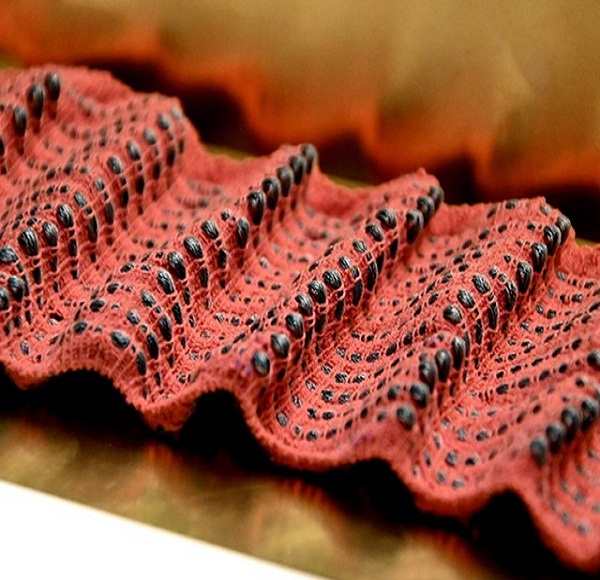A new fibre has been developed that can be made into clothing that tracks stretching and compression, then provides immediate tactile feedback in the form of pressure, lateral stretch, or vibration.

The multi-layered “OmniFibers” contain a fluid channel in the centre, which can be activated by a fluidic system. This system controls their geometry by pressurising and releasing a fluid medium, such as compressed air or water, into the channel, allowing the fibre to act as an artificial muscle.
They also contain stretchable sensors that can detect and measure the degree of stretching. The resulting composite fibres are thin and flexible enough to be sewn, woven, or knitted using standard commercial machines, the researchers said. The fibres have an extremely narrow width and make use of inexpensive material. They are also compatible with human skin, since its outer layer is based on a material similar to common polyester.
As an initial test application of the material, the team made a type of undergarment that singers can wear to monitor and play back the movement of respiratory muscles, to provide kinaesthetic feedback through the same garment to encourage optimal posture and breathing patterns for the desired vocal performance.
“Singing is particularly close to home, as my mom is an opera singer. She’s a soprano,” said MIT PhD candidate Ozgun Kilic Afsar, who worked with an opera singer while developing the fabric.
“We eventually were able to achieve both the sensing and the modes of actuation that we wanted in the textile, to record and replay the complex movements that we could capture from an expert singer’s physiology and transpose it to a nonsinger, a novice learner’s body. So, we are not just capturing this knowledge from an expert, but we are able to haptically transfer that to someone who is just learning,” she said.
Though this initial testing is in the context of vocal pedagogy, the same approach could be used to help athletes to learn how best to control their breathing in a given situation, based on monitoring accomplished athletes as they carry out various activities and stimulating the muscle groups that are in action.
The hope is that such garments could also be used to help patients regain healthy breathing patterns after major surgery or a respiratory disease such as Covid-19.
The soft fibre composite, which resembles a strand of yarn, has five layers: the innermost fluid channel, a silicone-based elastomeric tube to contain the working fluid, a soft stretchable sensor that detects strain as a change in electrical resistance, a braided polymer stretchable outer mesh that controls the outer dimensions of the fibre, and a non-stretchy filament that provides a mechanical constraint on the overall extensibility.
Afsar plans to continue working on making the whole system, including its control electronics and compressed air supply, more miniaturised to keep it as unobtrusive as possible.
Source: E&T










